|
|
|
Sort Order |
|
|
|
Items / Page
|
|
|
|
|
|
|
| Srl | Item |
| 1 |
ID:
100660
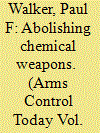

|
|
|
| 2 |
ID:
110602
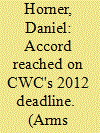

|
|
|
|
|
| Publication |
2012.
|
| Summary/Abstract |
Parties to the Chemical Weapons Convention (CWC) voted overwhelmingly on Dec. 1 to approve a document that reaffirms the importance of the treaty's April 2012 deadline for destruction of chemical weapons stockpiles but does not say countries that failed to meet the deadline would be violating the terms of the pact.
|
|
|
|
|
|
|
|
|
|
|
|
|
|
|
|
| 3 |
ID:
144292
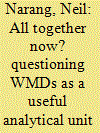

|
|
|
|
|
| Summary/Abstract |
The popular use of the term “weapons of mass destruction” (WMD) can be understood to imply a relationship between nuclear, chemical, and biological weapons proliferation insofar as it assumes that the separate weapons technologies can be usefully grouped into a single analytic category. This article explores whether WMD is actually a useful construct. It begins by reviewing the literature on nuclear, chemical, and biological weapons proliferation, including a recent study that sought to estimate the relationship between the pursuit and acquisition of these different weapons. It then explores some policy inferences that academics and policy makers may be tempted to draw from these studies, particularly regarding the Barack Obama administration's pursuit of deep nuclear reductions. It argues that many of these policy inferences are premature at best and misleading at worst. It concludes with a call for additional research into the causes and consequences of chemical and biological weapons proliferation, and a call for scholars to remain cautious in their desire to draw premature policy implications from their studies in order to be “policy relevant.”
|
|
|
|
|
|
|
|
|
|
|
|
|
|
|
|
| 4 |
ID:
154253


|
|
|
|
|
| Summary/Abstract |
The US has justified the use of military force against the Syrian regime under Bashar al-Assad, after its alleged use of chemical weapons against civilians. However, as long as the UN Security Council does not agree to intervention, unilateral American action is not permissible under the UN Charter. Even the principle of “responsibility to protect” is not justified in this case, as action would most likely be short, punitive and unlikely to end the attacks on Syrian civilians. The use of force rules, originating in customary international law and partially codified in the UN Charter, establish the lawful framework for the initiation of military activity by a government. Humanitarian intervention or a military campaign calculated to stop widespread attacks on a civilian population, including acts of genocide, other crimes against humanity and war crimes is also contested as it is not defined in the UN Charter, although many scholars and activists claim it is supported by the charter's central objective to defend human rights and fundamental freedoms.
|
|
|
|
|
|
|
|
|
|
|
|
|
|
|
|
| 5 |
ID:
127452
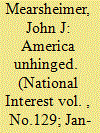

|
|
|
|
|
| Publication |
2014.
|
| Summary/Abstract |
SINCE EARLY 2011, political developments in Egypt and Syria have repeatedly captured the attention of the American foreign-policy elite. The Obama administration has tried to guide the turbulent political situation in post-Mubarak Egypt and become increasingly engaged in Syria's bloody civil war. The United States is already helping arm some of the forces fighting against the Assad regime, and President Obama came close to attacking Syria following its use of chemical weapons in August 2013. Washington is now directly involved in the effort to locate and destroy Syria's chemical-weapons stockpiles.
|
|
|
|
|
|
|
|
|
|
|
|
|
|
|
|
| 6 |
ID:
144284
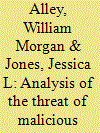

|
|
|
|
|
| Summary/Abstract |
This study seeks to evaluate the threat of malicious chemical use by non-state actors. It finds that non-state actors have primarily turned to ready-to-use crude chemical weapons (CW) instead of traditional CW agents. Interestingly, the worst crude CW attacks have been more destructive than those employing traditional CW. Scenarios for catastrophic consequences exist, but chemical attacks have typically been used to accomplish tactical goals, which leverage psychological and economic impacts. Therefore, successful efforts to counter CW proliferation by non-state actors must be substantially different from those targeting states.
|
|
|
|
|
|
|
|
|
|
|
|
|
|
|
|
| 7 |
ID:
001707
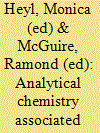

|
|
|
|
|
| Publication |
Dordrecht, Kluwer Academic, 1997.
|
| Description |
v.13 (xx, 347p.)
|
| Standard Number |
0792346483
|
|
|
|
|
|
|
|
|
|
|
|
Copies: C:1/I:0,R:0,Q:0
Circulation
| Accession# | Call# | Current Location | Status | Policy | Location |
| 041161 | 355.8345/HEY 041161 | Main | On Shelf | General | |
|
|
|
|
| 8 |
ID:
109273


|
|
|
| 9 |
ID:
075781
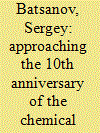

|
|
|
|
|
| Publication |
2006.
|
| Summary/Abstract |
April 29, 2007 will mark the 10th anniversary of the entry into force of the Chemical Weapons Convention (CWC), and it is also the deadline specified in the treaty for completing the destruction of all declared stockpiles of chemical weapons, most of which are owned by the United States and Russia. Unfortunately, it is already clear that neither country will meet the deadline. Although the delay in chemical weapons destruction is a serious problem, in other respects the treaty's bill of health is better than that of the Treaty on the Non-Proliferation of Nuclear Weapons or the Biological and Toxin Weapons Convention. This viewpoint reviews the current status of CWC implementation and looks forward to what might be accomplished at the Second Review Conference in April 2008.
|
|
|
|
|
|
|
|
|
|
|
|
|
|
|
|
| 10 |
ID:
062325
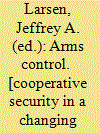

|
|
|
|
|
| Publication |
New Delhi, Viva Book Publisher, 2005.
|
| Description |
xviii, 413p.
|
| Standard Number |
8130900807
|
|
|
|
|
|
|
|
|
|
|
|
Copies: C:1/I:0,R:0,Q:0
Circulation
| Accession# | Call# | Current Location | Status | Policy | Location |
| 049653 | 327.174/LAR 049653 | Main | On Shelf | General | |
|
|
|
|
| 11 |
ID:
004877
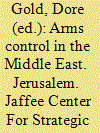

|
|
|
|
|
| Publication |
Jerusalem, Jaffee Center for Strategic Studies, 1990.
|
| Description |
160p.;maps
|
| Series |
JCSS Study;15
|
| Standard Number |
9653560174
|
|
|
|
|
|
|
|
|
|
|
|
Copies: C:1/I:0,R:0,Q:0
Circulation
| Accession# | Call# | Current Location | Status | Policy | Location |
| 035887 | 327.1740956/GOL 035887 | Main | On Shelf | General | |
|
|
|
|
| 12 |
ID:
001704


|
|
|
|
|
| Publication |
Dordrecht, Kluwer Academic, 1998.
|
| Description |
xxii, 200p.
|
| Standard Number |
0792351754
|
|
|
|
|
|
|
|
|
|
|
|
Copies: C:1/I:0,R:0,Q:0
Circulation
| Accession# | Call# | Current Location | Status | Policy | Location |
| 041167 | 355.8245/BUN 041167 | Main | On Shelf | General | |
|
|
|
|
| 13 |
ID:
004914
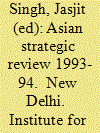

|
|
|
|
|
| Publication |
New Delhi, Institute for Defence Studies and Analyses, 1994.
|
| Description |
347p.
|
| Standard Number |
8186019014
|
|
|
|
|
|
|
|
|
|
|
|
Copies: C:2/I:0,R:0,Q:0
Circulation
| Accession# | Call# | Current Location | Status | Policy | Location |
| 035929 | 355.005095/JAS 035929 | Main | On Shelf | General | |
| 035930 | 355.005095/JAS 035930 | Main | On Shelf | General | |
|
|
|
|
| 14 |
ID:
143059
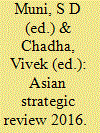

|
|
|
|
|
| Publication |
New Delhi, Pentagon Press, 2016.
|
| Description |
xiv, 380p.hbk
|
| Standard Number |
9788182748859
|
|
|
|
|
|
|
|
|
|
|
|
Copies: C:2/I:0,R:0,Q:0
Circulation
| Accession# | Call# | Current Location | Status | Policy | Location |
| 058437 | 355.005095/MUN 058437 | Main | On Shelf | General | |
| 058438 | 355.005095/MUN 058438 | Main | On Shelf | General | |
|
|
|
|
| 15 |
ID:
020992
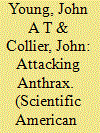

|
|
|
|
|
| Publication |
2002.
|
| Description |
48-59
|
|
|
|
|
|
|
|
|
|
|
|
|
|
|
|
| 16 |
ID:
007423
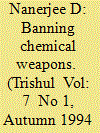

|
|
|
|
|
| Publication |
Autumn 1994.
|
| Description |
70-81
|
|
|
|
|
|
|
|
|
|
|
|
|
|
|
|
| 17 |
ID:
115298
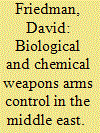

|
|
|
|
|
| Publication |
2012.
|
| Summary/Abstract |
Nonproliferation policies to prevent biological and chemical weapons use are important, but insufficient, particularly in view of the rise of global terrorism. Given the history of developing and using these weapons, it is crucial that governments properly prepare for biological and chemical threats, whether naturally occurring or man-made, such as by developing and managing effective healthcare infrastructure to mitigate widespread illness and injuries resulting from pandemics or terrorist attacks. Although the Middle East is one of the most sensitive and complex areas in the world-especially regarding regional arms control efforts and prevention-coordinating preparedness strategies among states in the region may be possible. Cooperatively addressing biological and chemical threats could lead to constructive progress towards the otherwise elusive goal of establishing a weapons of mass destruction-free zone in the Middle East.
|
|
|
|
|
|
|
|
|
|
|
|
|
|
|
|
| 18 |
ID:
101553
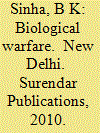

|
|
|
|
|
| Publication |
New Delhi, Surendar Publications, 2010.
|
| Description |
246p.
|
| Standard Number |
9789380014494, hbk
|
|
|
|
|
|
|
|
|
|
|
|
Copies: C:1/I:0,R:0,Q:0
Circulation
| Accession# | Call# | Current Location | Status | Policy | Location |
| 055599 | 358.38/SIN 055599 | Main | On Shelf | General | |
|
|
|
|
| 19 |
ID:
124636
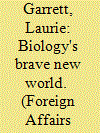

|
|
|
|
|
| Publication |
2013.
|
| Summary/Abstract |
In May 2010, the richest, most powerful man in biotechnology made a new creature. J. Craig Venter and his private-company team started with DNA and constructed a novel genetic sequence of more than one million coded bits of information known as nucleotides. Seven years earlier, Venter had been the first person in history to make a functioning creature from information. Looking at the strings of letters representing the DNA sequence for a virus called phi X174, which infects bacteria, he thought to himself, "I can assemble real DNA based on that computer information." And so he did, creating a virus based on the phi X174 genomic code. He followed the same recipe later on to generate the DNA for his larger and more sophisticated creature. Venter and his team figured out how to make an artificial bacterial cell, inserted their man-made DNA genome inside, and watched as the organic life form they had synthesized moved, ate, breathed, and replicated itself.
|
|
|
|
|
|
|
|
|
|
|
|
|
|
|
|
| 20 |
ID:
080826
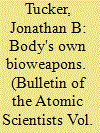

|
|
|
|
|
|
|
|